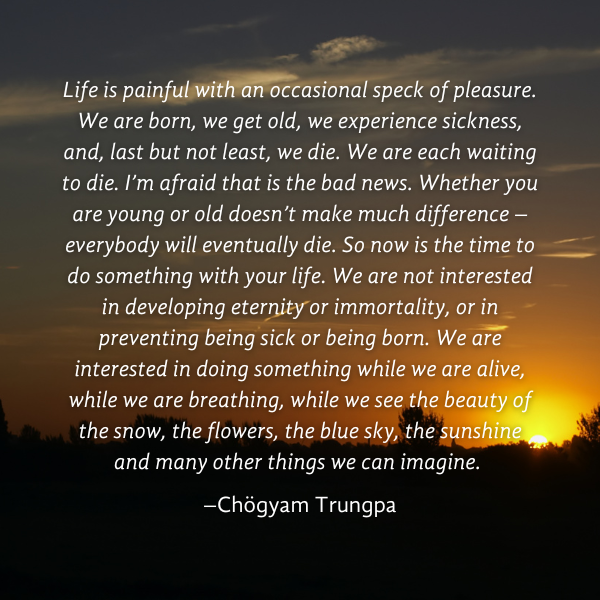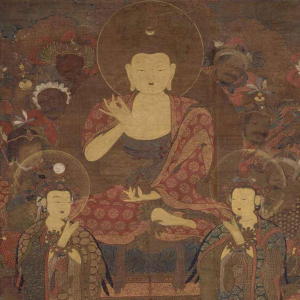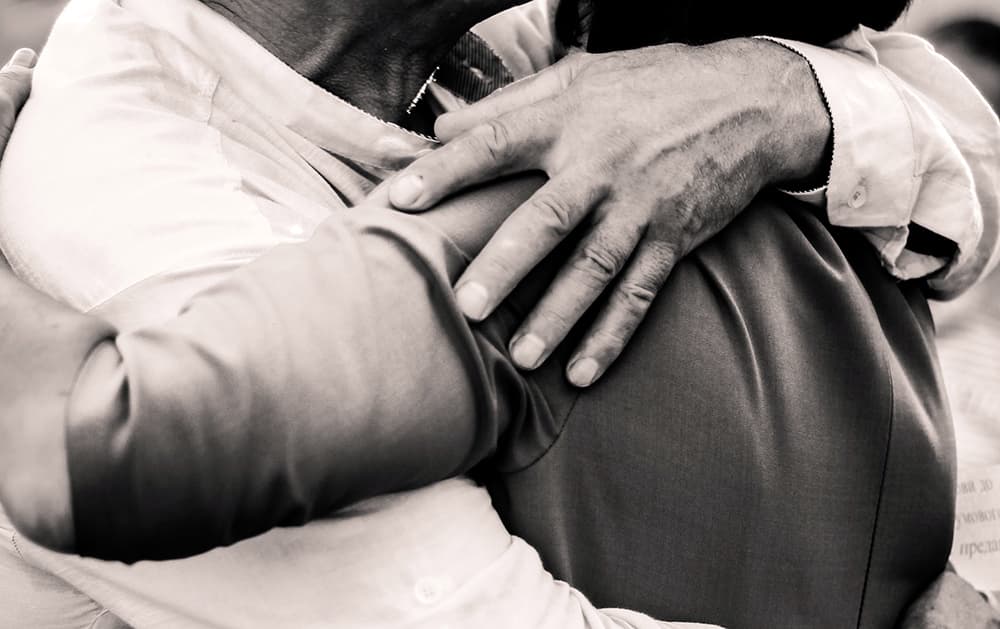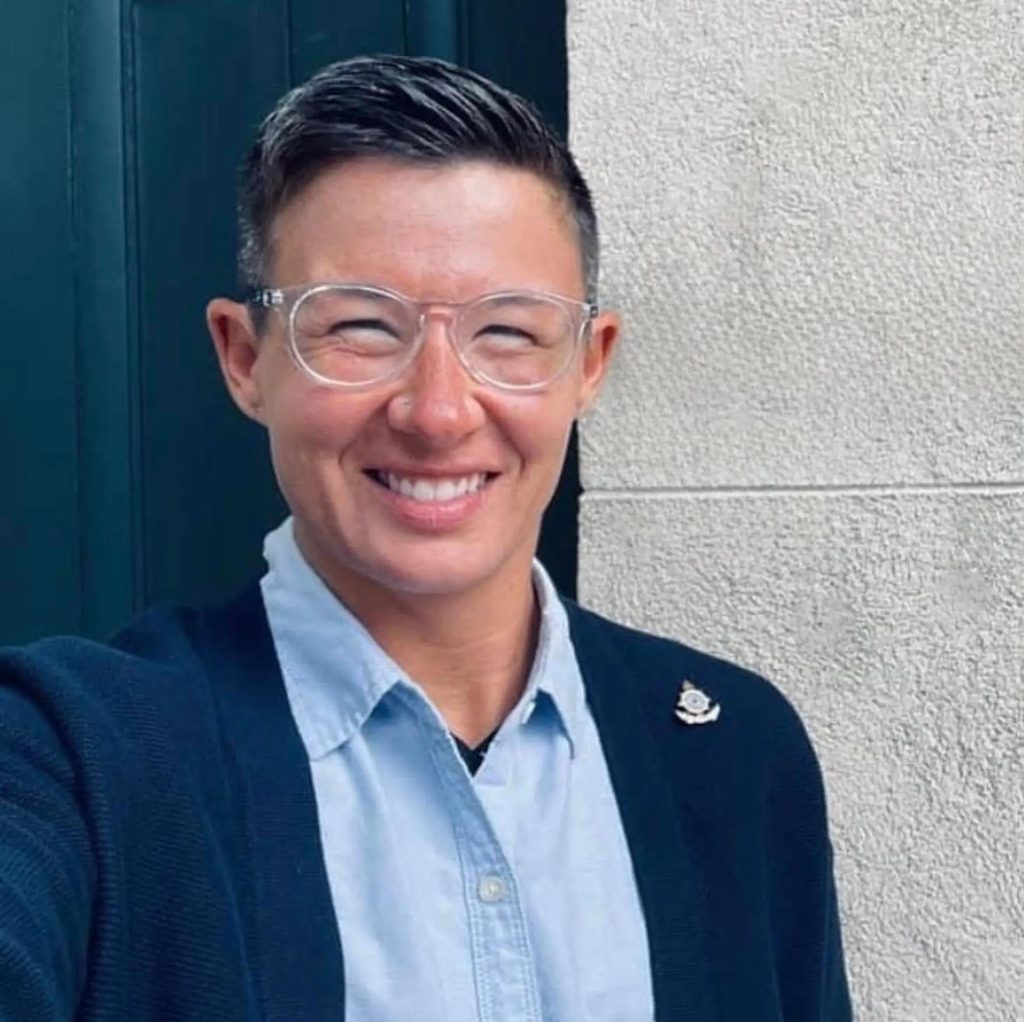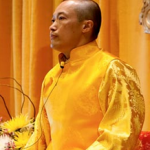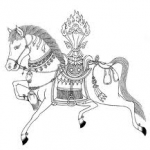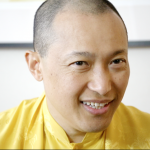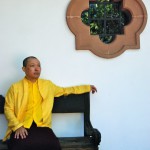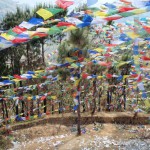Thursday
Dying & Death Classes on Shambhala Online
By Alley Smith

Death is the greatest of all teachers. –The Buddha
Shambhala Online has been offering a variety of courses on topics related to dying and death. These topics enable the sangha and outside community members to gather and think about death, engage in contemplative practices, and toil with topics such as fear, anxiety, the unknown, and how to have conversations about death.
The Shambhala community is gathering with purpose: to understand the dying process, to recognize and articulate the role of spiritual, religious and existential support, practices, and cultural norms within the modern Buddhist context. The result is tremendous openness and courage to face the inevitable and unknown in a gentle and relaxed way.
As Chögyam Trungpa Rinpoche says, Life is painful with an occasional speck of pleasure. We are born, we get old, we experience sickness, and, last but not least, we die. We are each waiting to die. I’m afraid that is the bad news. Whether you are young or old doesn’t make much difference – everybody will eventually die. So now is the time to do something with your life. We are not interested in developing eternity or immortality, or in preventing being sick or being born. We are interested in doing something while we are alive, while we are breathing, while we see the beauty of the snow, the flowers, the blue sky, the sunshine and many other things we can imagine.
While we are alive we can explore our personal belief systems about dying and death, our struggles, vulnerabilities, strong emotions, personal values, needs, and much more. Death has so much to teach us. Even as the Buddha was dying, he taught that suffering (dukkha) comes from not living in accordance with the truth of impermanence and interdependence. Death itself is a profound spiritual transmission.
Students have been gathering across the global community at Shambhala centers in Seattle, Dallas, Halifax, Los Angeles, and Philadelphia to offer support and practice advice. Communities are interested and invested in doing something while they are alive, while breathing, to be embraced by the sangha, to be met with unconditional kindness and the warmth of the Great Eastern Sun.
In the end, everything is left up to the individual. Therefore, most Buddhists do not take the truth of impermanence half-heartedly. Whether we are studying the Tibetan Book of the Dead, teachings of Amitabha Buddha, the Pure Lands, Sukhavati, Bodhichitta, the Bardos, and a vast array of teachings, we must do as many great Rinpoches and Tibetan lamas suggest. Engage in whichever practices are clearest, familiar, and most vivid on our deathbeds.
While we are alive we must be willing to face old age, sickness, and death with confidence and fearlessness. We must abandon any notion of resentment and attachment. Ask yourself, why would the Buddha say, Death is the greatest of all teachers? What can we learn from his words? In the end, as Trungpa Rinpoche says, “It’s up to you sweetheart.”
Shambhala Online would like to invite you to attend any one of these upcoming sessions in 2025:
Fear & Fearlessness: Navigating Life & Loss
March 27. During this online session, we will explore Chögyam Trungpa Rinpoche’s teachings on “Fear and Fearlessness” from the timeless classic, Shambhala: The Sacred Path of the Warrior.
The Buddha’s Discourse on Teachings to Be Given to the Sick
November 1. During this mini-retreat, we will read and explore the Buddha’s Discourse on the Teachings to Be Given to the Sick. We will examine traditional Buddhist teachings on the six senses, six sense objects, six elements, the five aggregates, and more.
Making Friends with Death & Dying: Support Group (1st Monday night of every month)
Next session April 7. Support group sessions will include a short talk, meditation practice, and an open forum to discuss personal experiences with old age, sickness, death, grief and bereavement. All are welcome. We respect your privacy. These sessions will not be recorded.
The 49 Day Ceremony: A Celebration of Life & Death
December 13. Join Chaplain Alley Smith for a 3-hour online mini-retreat as she guides participants into a deeper understanding of the 49 Day Ceremony and the common Buddhist practices and rituals that follow someone’s death – all within a modern Buddhist context.
Alley Smith (she/her) is an ordained Zen Buddhist Chaplain, scholar, researcher, and lecturer who serves at a college and university. Alley is deeply influenced by Pure Land Buddhism and Vajrayana. She has been a member of Shambhala and Zen since 1999. Alley works in the funeral industry in Vermont. She teaches a number of courses on Shambhala Online.
Entries filed under Dharma Teachings
Everyday Mindfulness – HIGHLIGHT
Ten practices for developing mindfulness in the midst of our everyday activities by Jennifer Wang Mindfulness and meditation go together like muscles and strength-training. Mindfulness is an attribute we exercise during meditation, and meditation is a practice (I believe the best practice) to cultivate mindfulness. However the rubber ... continuePosted June 27, 2016 by CGH
Investigation of the Dedication – HIGHLIGHT
Taking a closer look at one of our most familiar chants, the Shambhala Dedication of Merit By Russell Rodgers Mural depicting one of the Rigden Kings By the confidence of the golden sun of the great east, May the lotus garden of the Rigden’s wisdom bloom. May the dark ignorance of ... continuePosted February 28, 2016 by CGH
Think About It; Beliefs Matter – HIGHLIGHT
A reflection on how our beliefs influence our behavior, our communities, and our ability to live in ways that reflect basic goodness. by Shastri Christine Heming Recently, as I was preparing to teach about the power of kindness, I found myself re-reading many of my most revered books, ... continuePosted February 26, 2016 by CGH
Sakyong Gives Talk at Gongter – HIGHLIGHT
Sakyong Mipham Rinpoche Addresses Western Students at the Gongter Near the end of the Gongter, Sakyong Mipham Rinpoche gave an evening talk to the Westerners and English-speaking Tibetans attending the empowerments. About two hundred people attended the event, which was followed by a blessing line where everyone ... continuePosted November 16, 2015 by CGH
Taking Refuge – HIGHLIGHT
Dharma Teaching by Sakyong Mipham Rinpoche The Tibetan word for refuge is chup, “to be protected by.” Every day we wake up and tacitly take refuge in something that we think will offer us security and protection. Most of the time we put our poker chip on the ... continuePosted October 28, 2015 by Dan
Meditation and the Truth of Suffering – HIGHLIGHT
Dharma Teaching by Sakyong Mipham Rinpoche The path of meditation isn’t necessarily about becoming a Buddhist. It’s about awakening to who we already are: buddha—“awakened one” in Sanskrit. Through the practice of meditation, the Buddha overcame bewilderment and suffering and awoke to the truth of reality, which is ... continuePosted September 14, 2015 by Dan
Windhorse – HIGHLIGHT
Dharma Teachings by Sakyong Mipham Rinpoche During hard times, people often ask me for advice. They feel destabilized and scattered. They’re often caught up in examining who they are, what the world is, and how they fit in. They’re questioning their understanding of buddhadharma, as well as their ... continuePosted August 17, 2015 by Dan
Meditation – HIGHLIGHT
Dharma Teaching by Sakyong Mipham Rinpoche We sometimes forget how the Buddhist teachings came into being. We forget why the Buddha left his father’s palace. Dissatisfied with maintaining an illusion, he wanted to understand his life—and life itself. Just like the Buddha, most of us also would like ... continuePosted July 20, 2015 by Dan
Educating the Sky – HIGHLIGHT
COLUMN: Dharma Teachings by Acharya Noel McLellan originally published on broken leaf Chogyam Trungpa Rinpoche wrote a text on how to educate a prince, someone who would grow up to be a wise, compassionate, skilful, and joyous leader. The text states that the prince’s education should occur in an environment ... continuePosted July 10, 2015 by
The Field of Stillness – HIGHLIGHT
Photo courtesy of Jennifer HolderCOLUMN: Dharma Teachings by Roger Guest There are many ways to ground ourselves in presence. We might walk slowly and mindfully, meditate on the breath, focus on sensations within the body or place our attention on an object in the environment. Some might be ... continuePosted June 15, 2015 by Dan
The Practice of Peaceful Abiding – HIGHLIGHT
Dharma Teaching by Sakyong Mipham Rinpoche Preparing to Practice Taming our mind through shamatha meditation, or “peaceful abiding,” is the most important thing we can do. Through peaceful abiding, we learn to rest fearlessly in our natural state, which is basic goodness. We experience basic goodness when we relax ... continuePosted June 8, 2015 by Dan
Prometheus’ Chains: The Myth of Shenpa – HIGHLIGHT
PrometheusCOLUMN: Dharma Teachings article by Crystal Gandrud All myths evolve in the light of intelligence and imagination (also known as basic goodness). We conceive of what conceives us in an eternal wish to know where we came from and why. The stories we tell are powerful for one ... continuePosted June 3, 2015 by
The Dance of Fear – HIGHLIGHT
miksang image by Charles BlackhallCOLUMN: Dharma Teachings by Roger Guest To be a warrior means to live a life without pretense. In simple terms, this requires an intimacy with reality that leaves no room for self-deception. Once, while giving a talk to a group of about thirty people, I ... continuePosted May 15, 2015 by Dan
Ego and Egolessness – HIGHLIGHT
photo courtesy of the Sakyong LhadrangDharma Teaching by Sakyong Mipham Rinpoche What is buddhahood? It is the attaining of egolessness. According to the hinayana — the “narrow path” — if we attain egolessness of self, we realize nirvana, enlightenment. This is a common approach: to attain enlightenment for ... continuePosted May 4, 2015 by
A Letter Regarding the Earthquake in Nepal from Shastri Amy Conway – HIGHLIGHT
Dear Shambhala Sangha, Photo by Bob Sonne on his 2008 trip to Nepal and India As you have probably heard by now, yesterday a 7.8 magnitude earthquake hit Nepal killing more than 2,500 people with other deaths in India and Tibet. Aftershocks today have also been devastating. The ... continuePosted April 28, 2015 by Dan
![]() RSS feed for the Dharma Teachings category
RSS feed for the Dharma Teachings category
View all posts from authors in Dharma Teachings: jillian_johnson

